|
Karma & Orso seem to have trouble understanding why humans wash their dirty clothes, especially when they smell sooooo yummy!
0 Comments
This is what Karma must be saying in her own little puppy language in this short video clip: “See this barstool??? This is my safe zone! It’s where I go when I want you to leave me alone! Get it??? No, you cannot visit! No, you cannot come in! And, NO, you cannot lick my ears to get me to come out!” Enjoy! This short video clip shows what goes on almost every morning here at home. Karma, Luna & Orso are definitely morning dogs. Mouse, not so much. I am with Mouse on this one. I cannot imagine this much excitement every morning. Enjoy! Every since Karma came home, there is no doubt that Orso has toy hoarding issues. He cannot stand to see Karma or anyone for that matter with a toy! He has to have them all to himself. Below are a ton of great photos of all the dogs playing this afternoon. There is also a 5 minute video showing Orso and Karma playing with all the toys. It’s a long video but it’s interesting to watch the interaction between them and how they steal toys from each other, play hide and go seek and actually get very vocal over the toys. Enjoy! This is a cute and short video of Karma playing with her cat teaser for the first time. She played with it for about 10 nonstop minutes this morning and by the time she was done playing, it was missing most of the feathers! Enjoy! Below is the outcome of our weekly treat & toy replenishment shopping spree at Petco! Favorite buy of this visit is a couple of 36″ cat teaser toys that have feathers and bells at the end! Karma is gonna LOVE these!
There is nothing as entertaining on a Friday evening like a friendly game of tug between a 145 pound Corso puppy and a 25 pound Corso puppy! Enjoy!
Tonight was Karma’s first of six (or seven?) Puppy Obedience & Manners classes, which is being led by Amaris Hess Garneau, a trainer for Applause Your Paws Dog Training. Since the puppies in this class are too young to have all of their shots, the class is held afterhours in the lobby of my vet’s office, South Kendall Animal Clinic, once the floors have been disinfected. I just wish the lobby floors were a bit more forgiving on puppy joints!
Since it’s summer, getting a big puppy class together like Orso had has been tough for Dee Hoult, owner of Applause Your Paws. Tonight’s class only had Karma & Manny, a Golden Retriever puppy, in it. Despite this, the class was a great experience and Karma got to finally play with a puppy her own age and size instead of the monsters we have at home. This is of particular importance to me because she abuses our adults at home and they don’t react, correct her or even yelp when she bites too hard, so she isn’t learning bite inhibition at home. This class will hopefully teach her to play a little less rough! We also worked a little on engagement and simple obedience, something Karma can definitely use! Orso did all his group classes with Applause Your Paws and they all went awesome so we are hoping for the same results with Karma. Below are some of my favorite shots of the class, enjoy! Last week, I realized that it was in everyone’s best interest, especially Karma’s, to add an area rug for the family room. It’s like WWF in our house and we don’t want anyone getting hurt. Our area rug arrived today and the dogs were not only eager to help set it up but also to play on it like the crazy pooches that they are. I also decided that Karma is too much of an escape artist to keep trying to teach her to stay in the pen, so we switched her pen for a crate. Below is a cute video of the 4 of them on the new rug and Karma’s new set-up, enjoy! Karma’s AKC registration and pedigree came in today’s mail! What great lines our girl has! So proud to have Lionheart Buona Karma di Costa Bel as part of the Costa Bel Cane Corso family! Below is her wonderful pedigree!
Below is a cute & short video clip of Orso working for ice, enjoy! This article was shared with Costa Bel Cane Corso by fellow Cane Corso enthusiast Janet Gigante of La Faccia Cane Corso in New York. Thanks, Janet, for sharing this important information with the Corso community!
Anesthesia and the Mastiff, by Robin M. Smith, DVM I thought that I would talk about anesthesia concerns and the mastiff since that is the most frequently asked question I get from mastiff owners. First off, you MUST have a veterinarian that is willing to listen to you and who is not afraid to be questioned about their anesthesia methods and how they monitor the pet once they are under anesthesia. If they do not want to discuss this or if they have a comment like, “well, I have always done it so and so way and I am not going to change”, find yourself another veterinarian. I think that the public needs to be aware of exactly what is happening to their dogs and the risks that are possible. ALL anesthesias are putting the dog at risk… BUT there are some that are much safer than others and I will discuss these. To start, I want to mention a few anesthesias that I would avoid if at all possible. In the past, most of these drugs were used exclusively, but with the advent of the new drugs and safer ones, they should not be used in the mastiff. Mastiffs are not just big Chihuahuas. The mastiff generally has a slower heart rate than smaller dogs and they also have inherently a lower blood pressure. They also, as you know, have a larger body mass. These things add to the risk of anesthetizing them. I never use acepromazine anymore as a pre-anesthetic or tranquilizer. Acepromazine lowers blood pressure and dilates blood vessels thereby making the blood pressure even lower. It also is metabolized (gotten rid of by the body) very slowly and tends to accumulate in fatty tissues. Therefore, larger dogs and fatter dogs usually have to be given a larger dose than normal in order to have effect, and because of this, it takes these dogs sometimes days to get back to normal. I have used it a lot in the past… In fact, it was the “gold standard” for pre-anesthetic sedation, but not anymore. Many people have used it in tablet form for tranquilization during stressful periods, i.e. thunderstorms. Again, I used to use it for this, but do not now, especially in giant breeds… It is too unpredictable. Just to let you know, I use Benadryl for thunderstorms at a dose of 1 mg./lb but not to exceed 100 mg. and find it works very well to make the dog tired and rest better. Xylazine (Rompun) is another drug I avoid. I haven’t used it in about 5 years. It makes the heart more susceptible to the effects of epinephrine (adrenalin) that is in the body and therefore, making the dog more susceptible to heart abnormalities. It is a difficult drug to dose in giant breed dogs. Acepromazine and Xylazine are the two drugs that I try to avoid if possible. If your veterinarian is also a large animal (cow, not mastiff) veterinarian, he may very well use the two drugs as they are used in farm animals a lot. If for some reason, your veterinarian must use these two drugs, I think it is mandatory that the dog be monitored by an EKG machine during surgery and immediately post-operatively. Other drugs that I do not use much although they are still used are the thiopentals. These are like sodium pentathol. They work very rapidly to knock the dog down, but are very powerful and stay in the system a long time. Also if the drug gets out of the vein (like if the dogs jump) the thiopentals can irritate the surrounding area and completely slough the area (all the tissue dies). The drug(s) that I use the most in mastiffs are valium, ketamine, telazol, and propofol. A combination of valium and ketamine given intravenously will be enough to knock the dog down in order to insert the endotracheal tube. Both of these drugs are very safe and I use them a lot in the older dogs. Neither one affect the heart much. Telazol is very similar to valium and ketamine and also works well for anesthesia so that an endotracheal tube be place (I use .1 cc/lb and do not exceed 1.5 cc total). I do use propofol (deprivan) for short procedures, i.e. OFA radiographs. Propofol is a fairly new drug in the veterinary field but has been used for a long time in the human field. It is a milky solution that after opening a vial cannot be stored. It gets contaminated with bacteria very easily. Because it is expensive, the veterinarian may try to cut corners and use old leftover propofol that is sitting in the fridge. It is given to effect or in other words, it is given IV until the dog goes down and then the dog is intubated and put on gas. The GREAT thing about this drug is that as soon as the animal is taken off the gas, the dog is awake and can walk out without assistance. I have also used the drug in C-sections to sedate the dog long enough to insert the endotracheal tube. It is a very top of the line drug. I do find the dosages of propofol to be a lot lower than the manufacturer’s literature dosage. One added thing: Propofol can lower blood pressure so the pet needs to be monitored while on that. I also use oxymorphone for sedation and sometimes as the sole sedative for simple procedures like biopsy. It is an opiod and therefore it can cause respiratory depression, which means that the dog needs to be constantly monitored. There is a reversal agent called Naloxone that will reverse the effects of the drug and works quite well. I will always put the dog on gas for a fairly short procedure. Isoforane is a gas of choice since it has fewer side effects. Halothane is still being used by some veterinarians. I do not use it since it (just like xylazine) sensitizes the heart which can cause irregular beats. But, as long as the dog is properly monitored, there should be no problem. Prior to ANY anesthesia in any aged animal, I require a pre-anesthetic blood work up. I get a PCV (monitors whether anemic or dehydrated), a BUN (monitors liver and kidney function), Creatinine (monitors kidney function), ALT (monitors liver function), Alkaline phosphates (monitors liver and the biliary system), Total protein (monitors the immune system and hydration status), glucose and the electrolytes (sodium, potassium and chloride). I get these as I said even in young animals… It is just good medicine to know where the dog is prior to surgery and anesthesia so we will know how they will tolerate anesthesia. It is the base line. These tests also guide me to my use of anesthesia. For example, if there is kidney damage I know to avoid drugs that have to go through the kidney to be eliminated from the body. The temperature is also monitored along with the heart by an EKG. Atrophine was a drug that was used all the time as a pre-medication to dry up the saliva in dogs and cats and to keep the heart rate up. It is not used much anymore, or shouldn’t be used in large and giant breeds. I don’t use it in any breed anymore. Atrophine causes the gut to slow down and this is not good especially in the mastiff. I believe slowing the gut down predisposes the mastiff to bloating. Anesthetic Protocols: Routine Spay or Neuter. I hate the word ROUTINE used here because no surgery is routine. I used valium at .3 mg/kg and ketamine at 10 mg/kg IV and then I put the tube down the trachea and start the dog on isoforane gas anesthetic. I have not had problems with these in the mastiff. OFA Radiographs. I know many of you try to get OFA radiographs while the animal is awake. An unsedated animal is very hard to position correctly, but even more importantly OFA asks you to sedate the dogs. OFA believes that by not sedating the dogs, we’re not getting good representative x-rays. I believe if the OFA radiographs are done with sedation, it would be very hard to miss a dysplastic animal. Depending on if the dog is going to go right home or stay in the hospital. I will use 2 anesthetics for each case. If the dog is staying, I use the valium/ketamine mixture and if the dog is not staying, then I use the propofol and then the dog is intubated. Just another added note: I always put an IV catheter in for a quick access to the blood stream in case something does happen and I need to give drugs quickly. Cesearean Sections. The main goal here is to obtain the least sedation possible in the puppies. For the Cesearean section, I utilize Propofol at a dose of 3 mg./ lb. or until I can get an endotracheal tube down the dog. If I had to choose a second choice I would give the bitch torbutrol and valium as a preanesthetic as described next and then intubate after masking down. I use torbugesic at .45 mg/kg and give it to the muscle. Then I give valium (.45 mg/kg) intramuscularly. We prep the bitch on the floor by shaving her belly and then when done, we put her on the table and mask her down. We put a large mask over her muzzle and turn the gas all the way until she is alseep enough to put the endotracheal tube in. While masking the bitch down, she may struggle since the dog thinks it is not getting oxygen, even though it is. The trick here is to get in and the puppies out ASAP. Propofol can also be used and I have had good results with it. The bitch is wide awake as soon as the last staple is in. I am comfortable with either one. Those are probably the three most common surgeries I do on mastiffs. Don’t let the anesthesia scare you. Where there is some risk has been lowered by doing all the blood work and the pre-op exams that I mentioned above. I wanted to take Orso swimming at my parents’ house today and decided to bring Karma along. We weren’t really planning to take her with us, but we figured we’d give Luna and Mouse a little break from her. It was great that we did because she had an awesome time with Orso and vice versa! Karma is very bold and isn’t afraid of anything! She ran into that water like she had been born in it! We were there for several hours with my parents and enjoyed watching Orso and Karma play with each other. Below are 50 of the 310 photos that I took. I know 50 photos are a lot, but I had to post them all, enjoy!
|
YVONNE
|
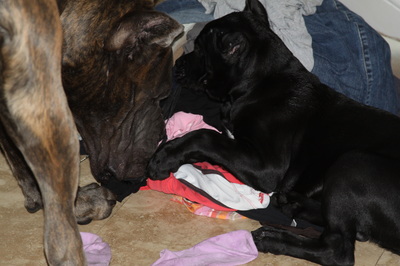
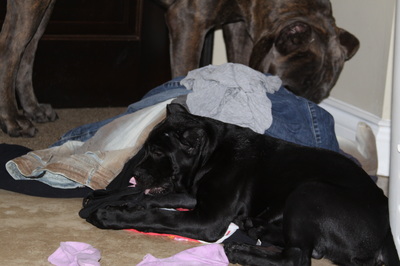
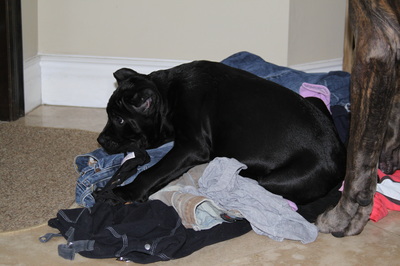
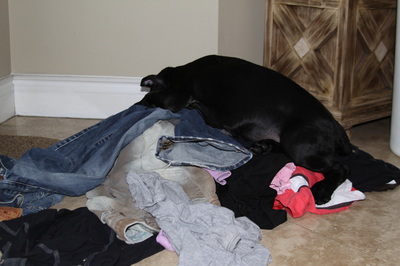
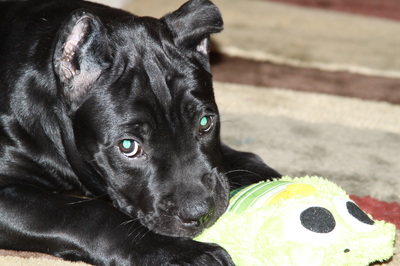
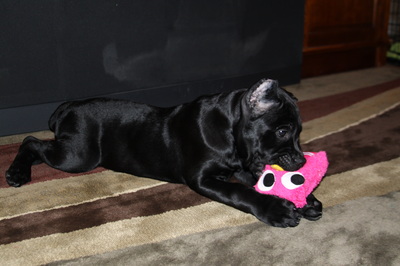
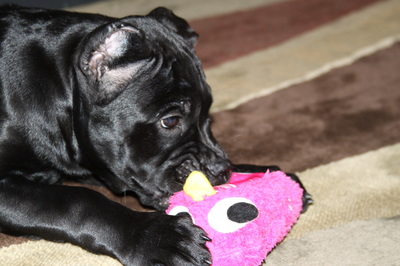
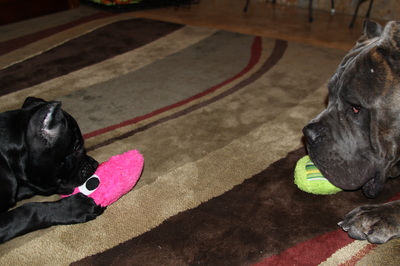
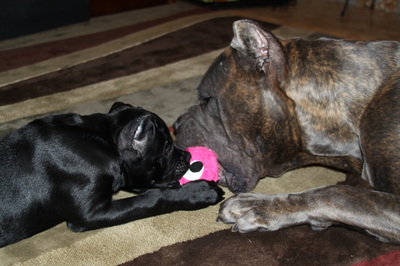
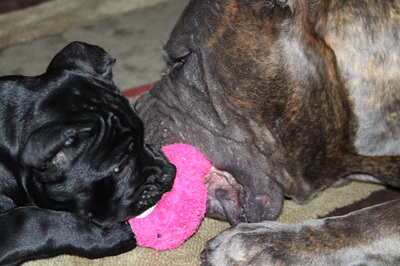
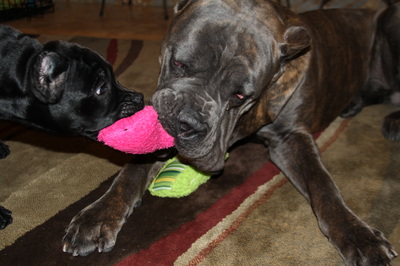
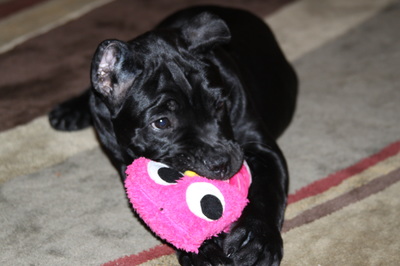
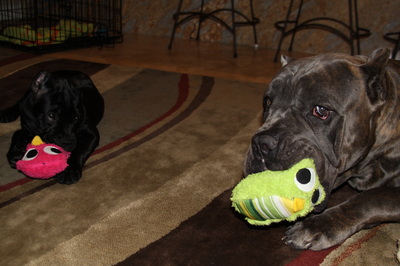
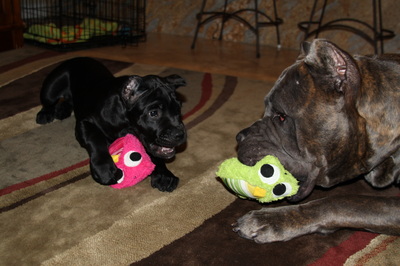
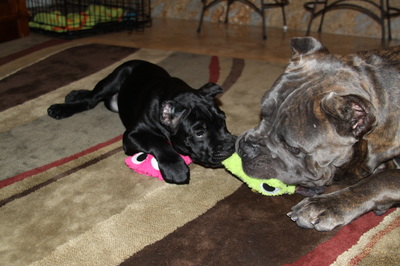
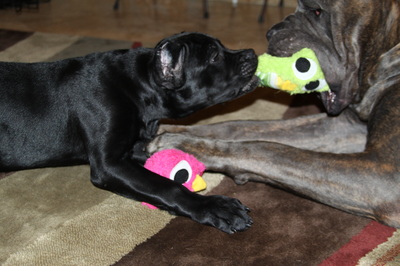
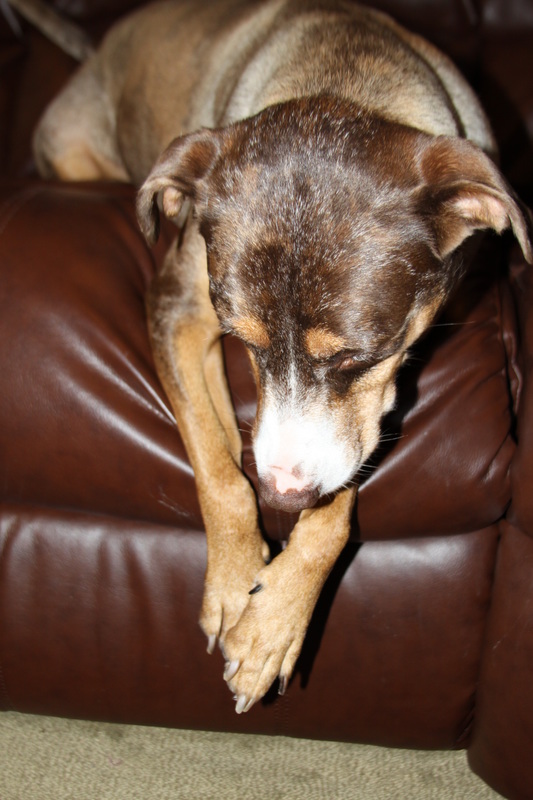
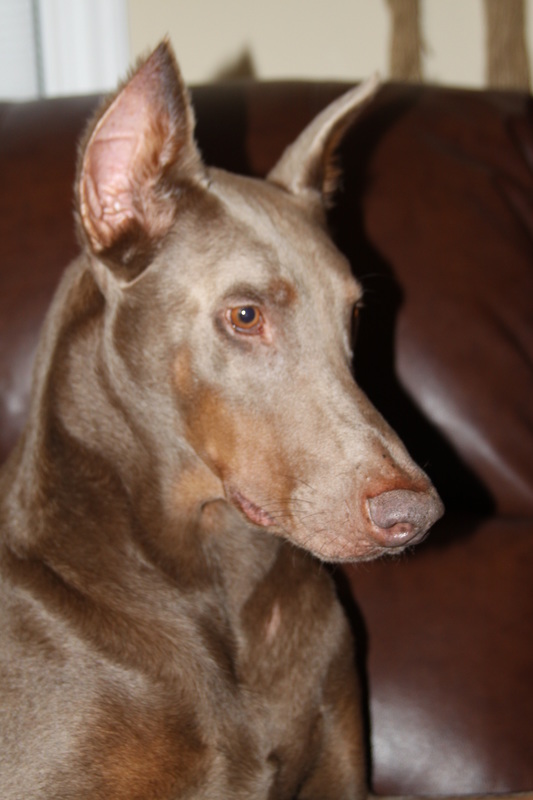
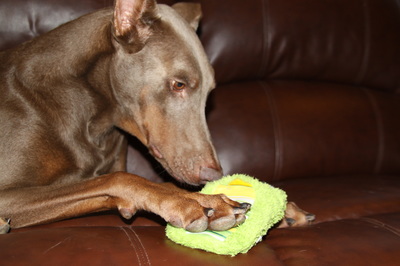
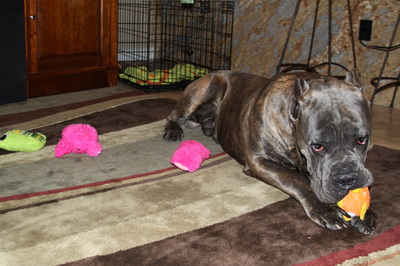
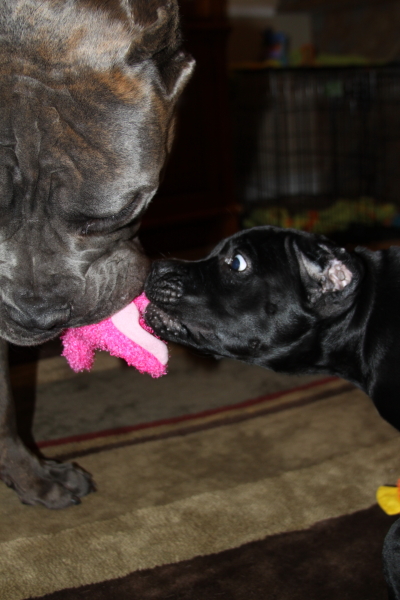
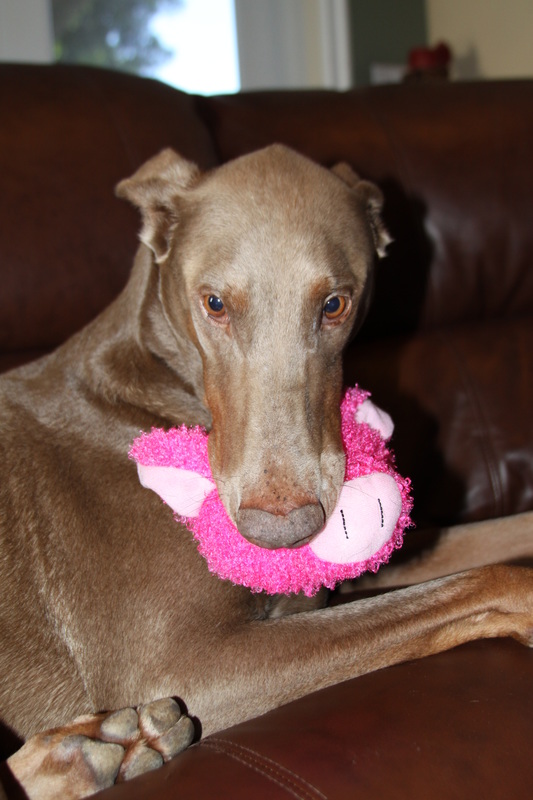
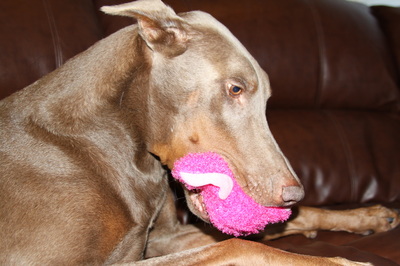
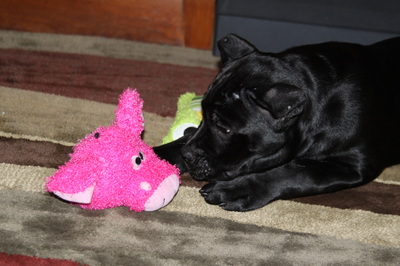
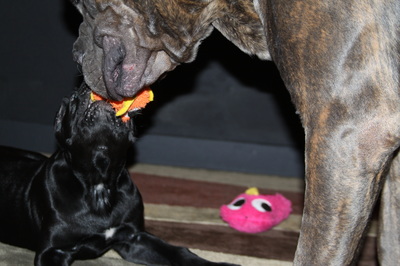
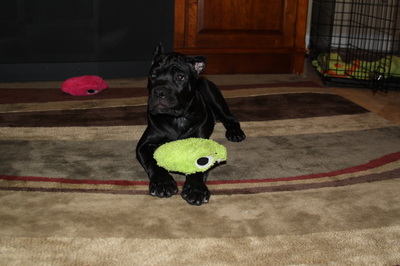
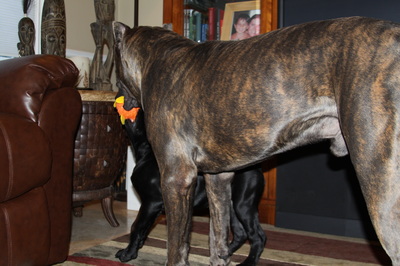
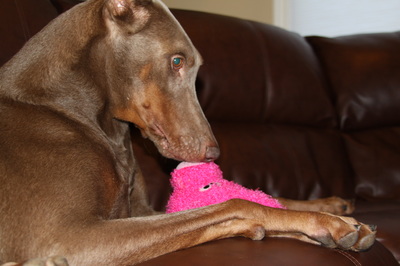
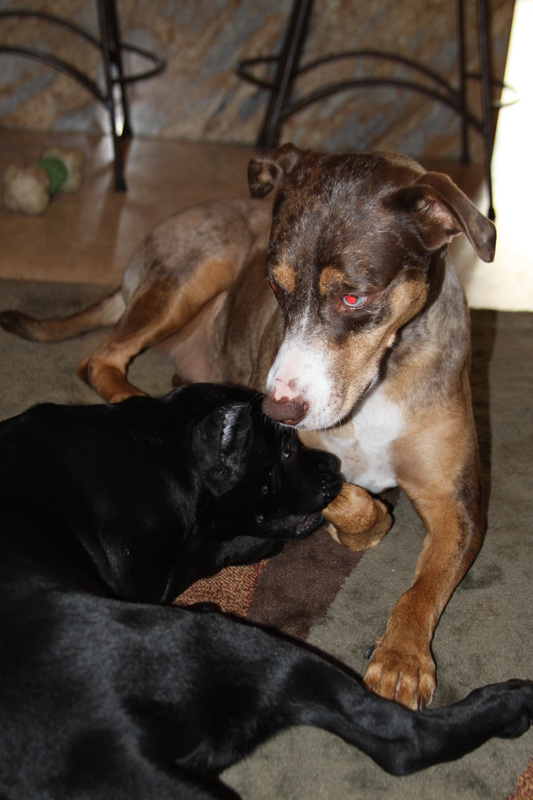
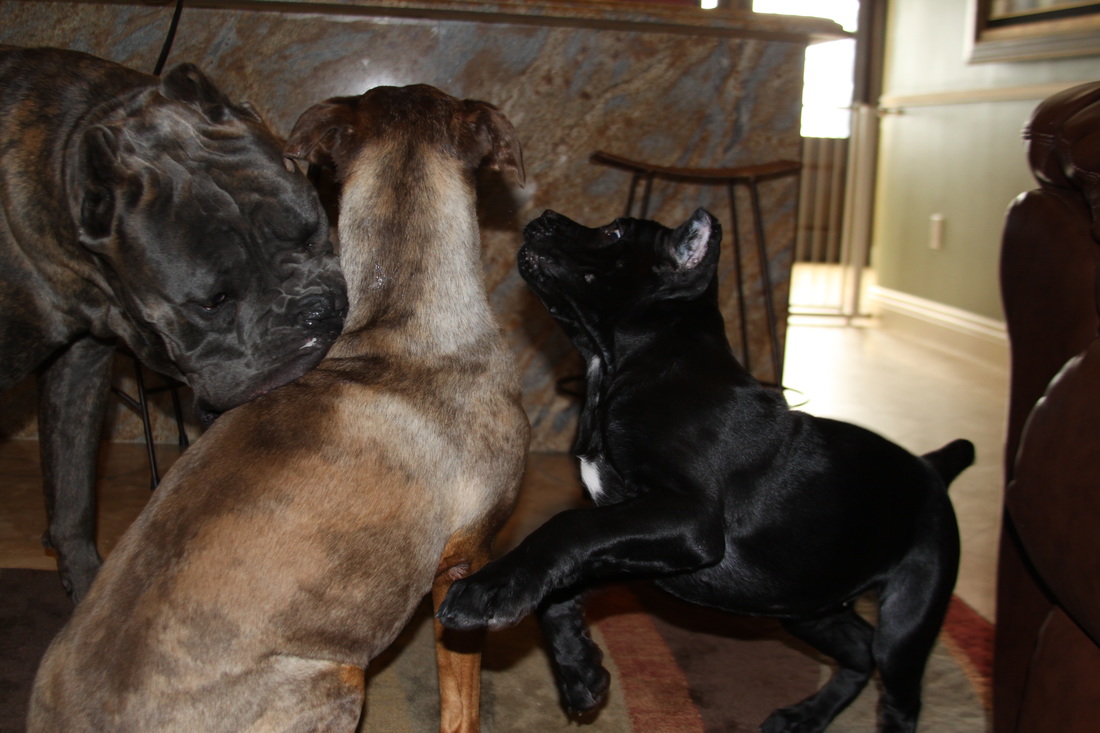
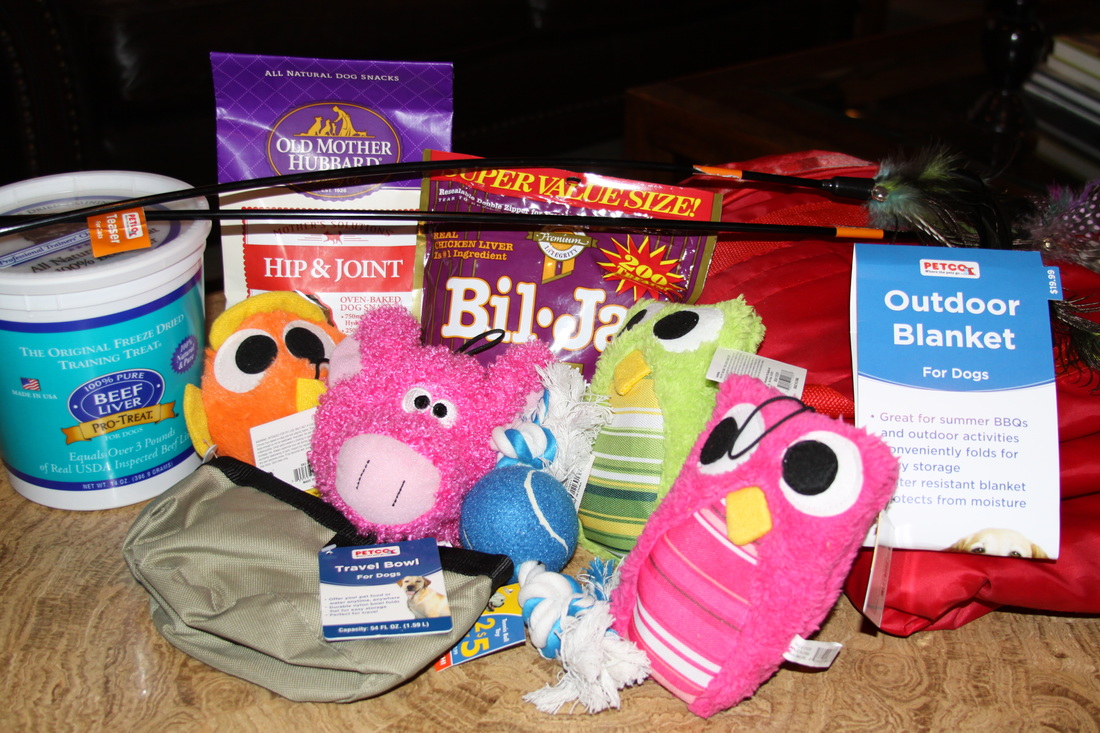
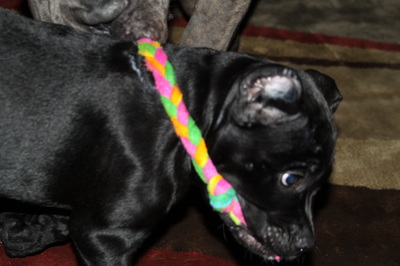
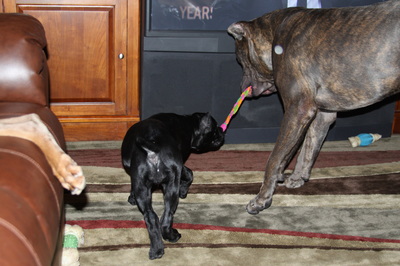
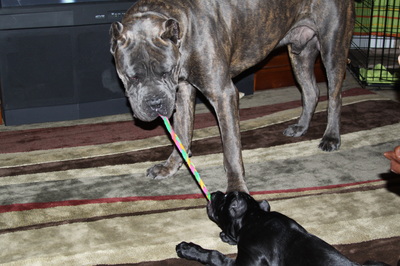
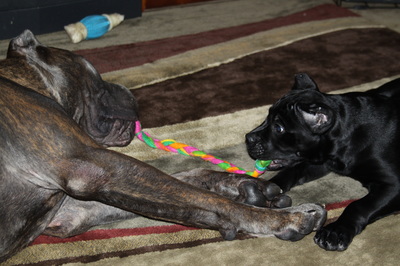
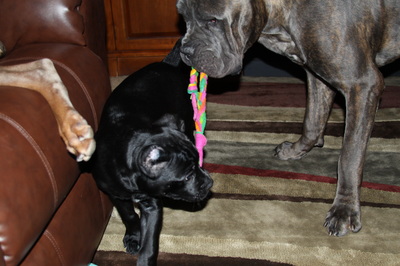
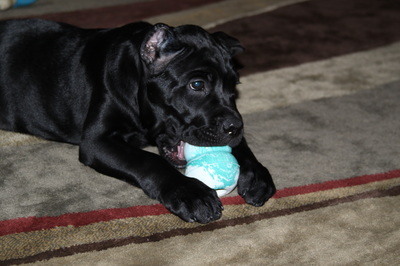
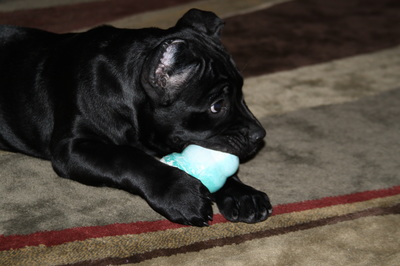
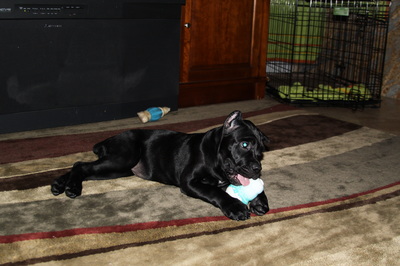
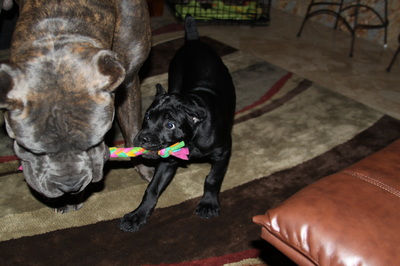
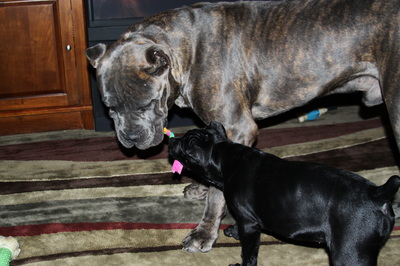
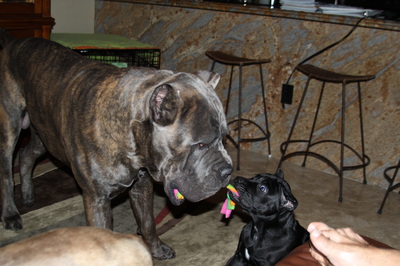
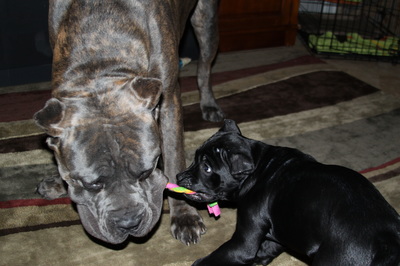
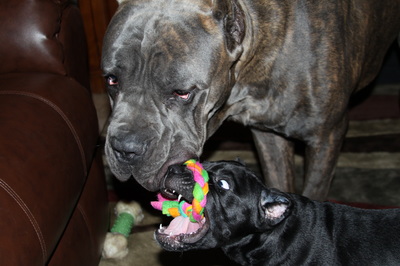
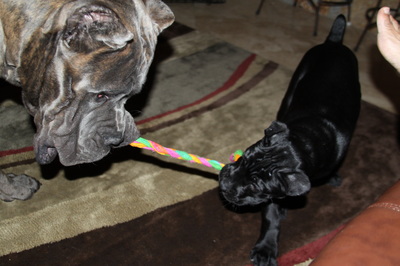
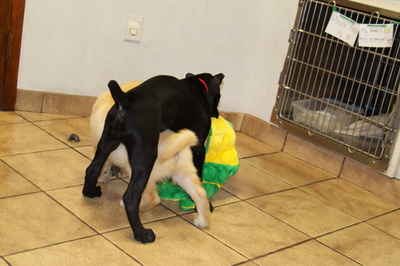
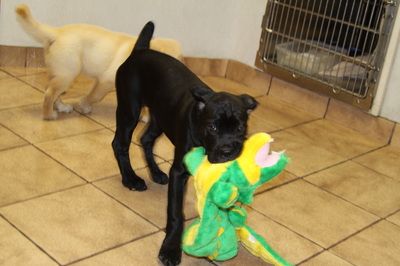
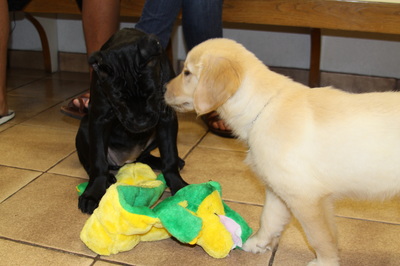
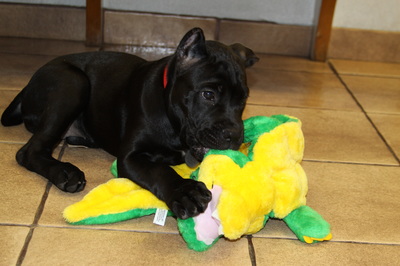
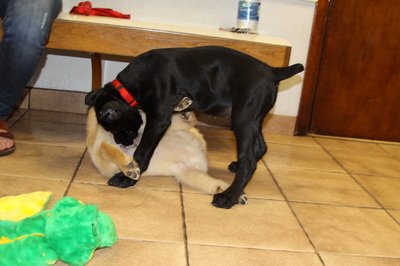
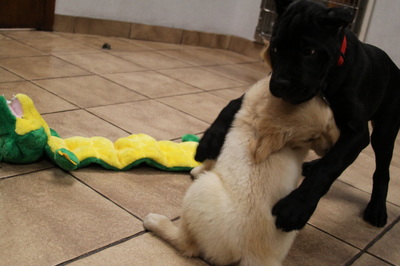
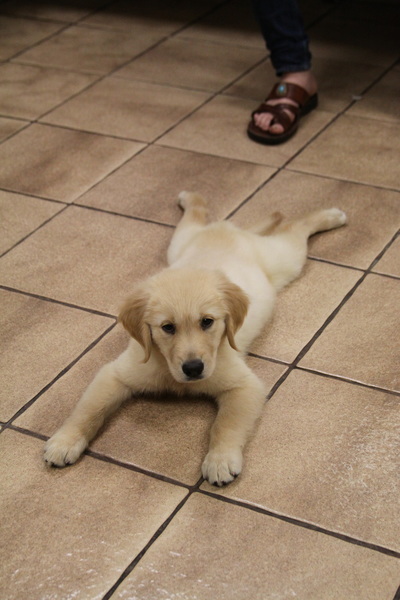
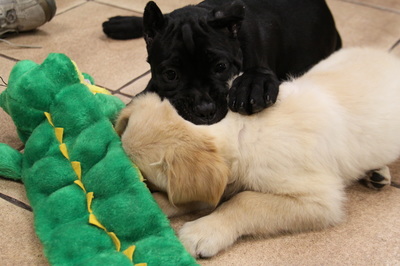
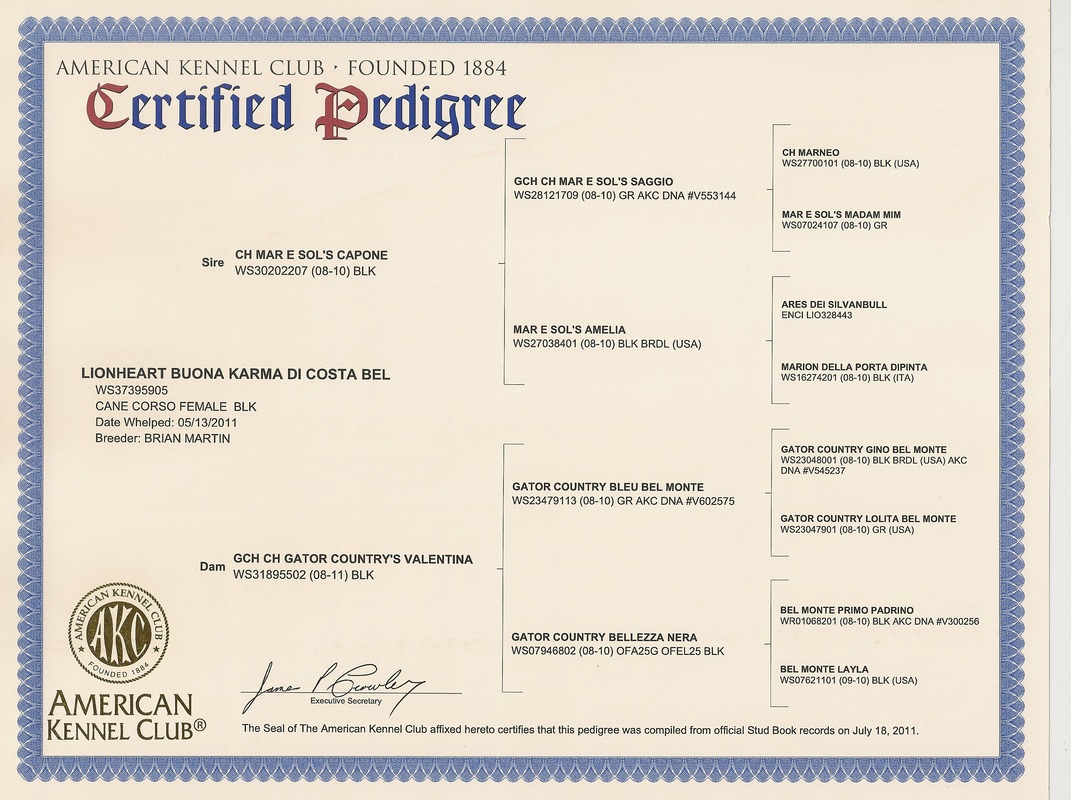
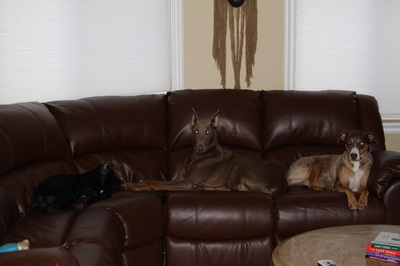
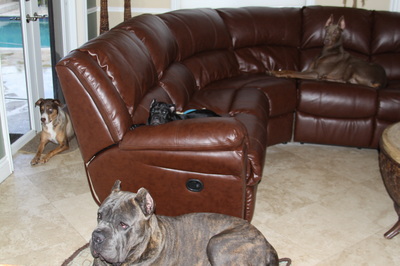
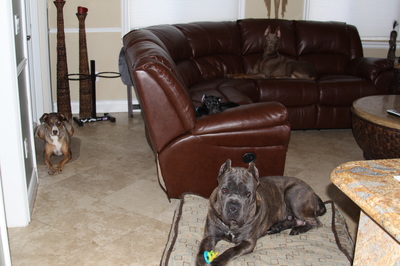
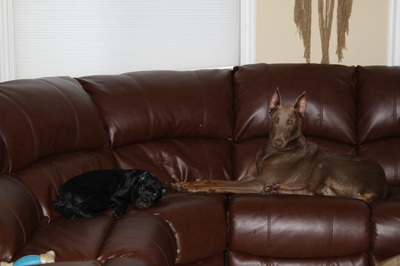
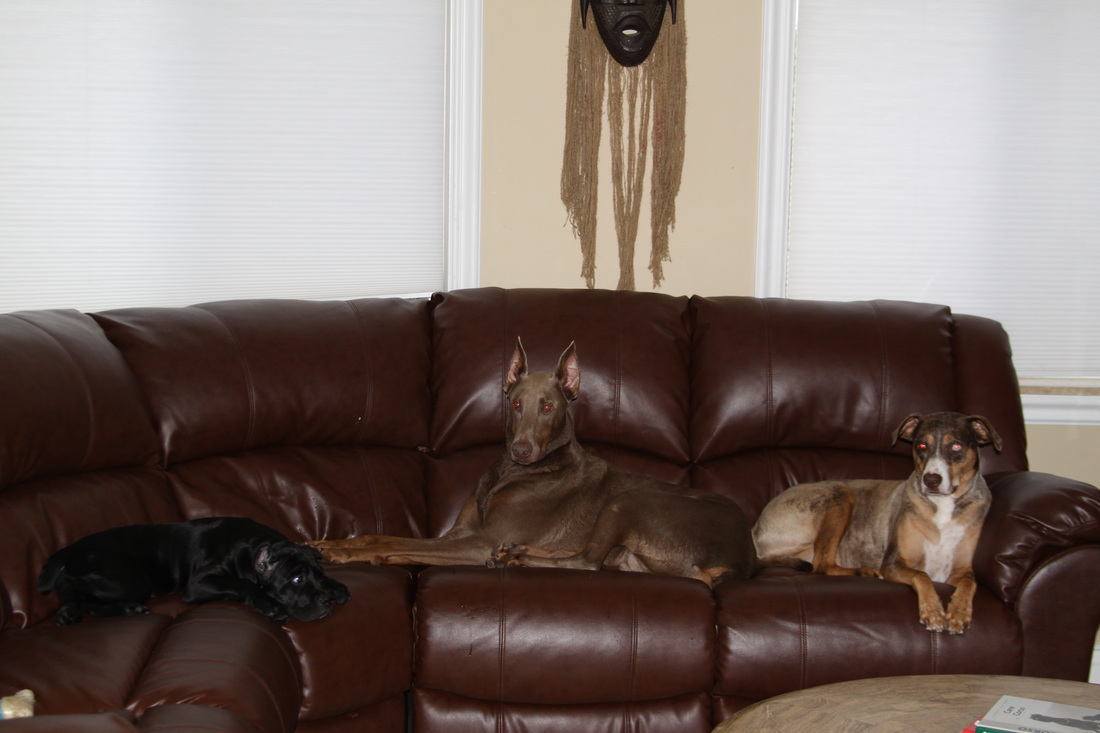
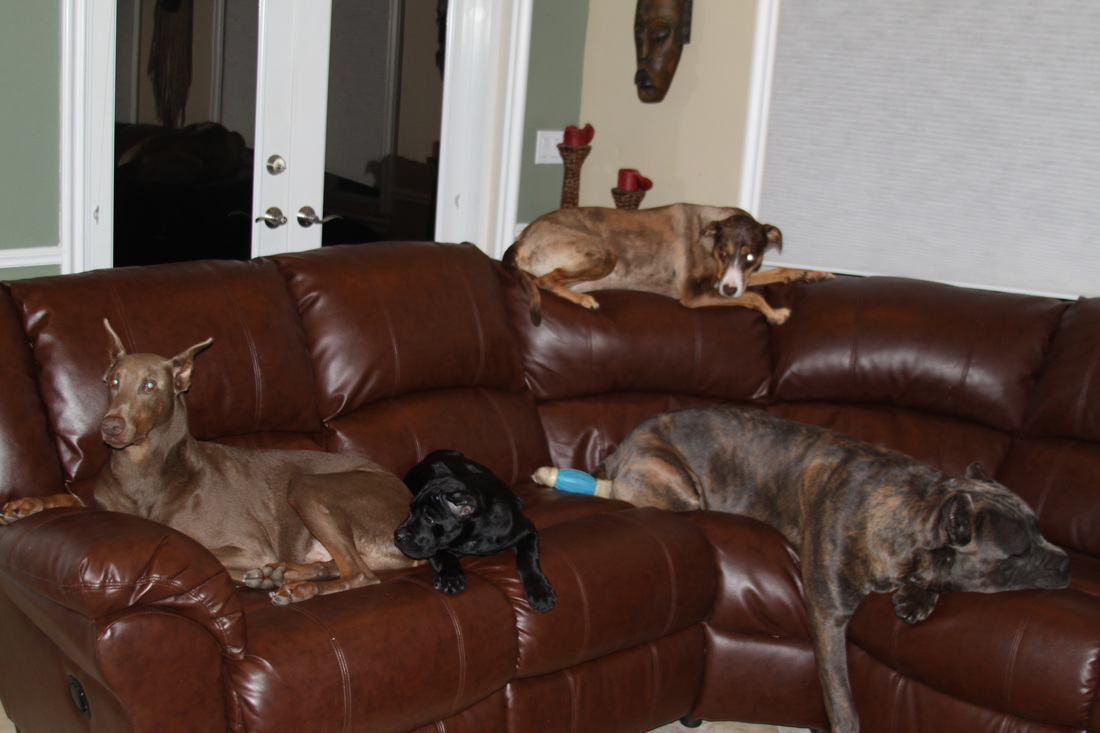
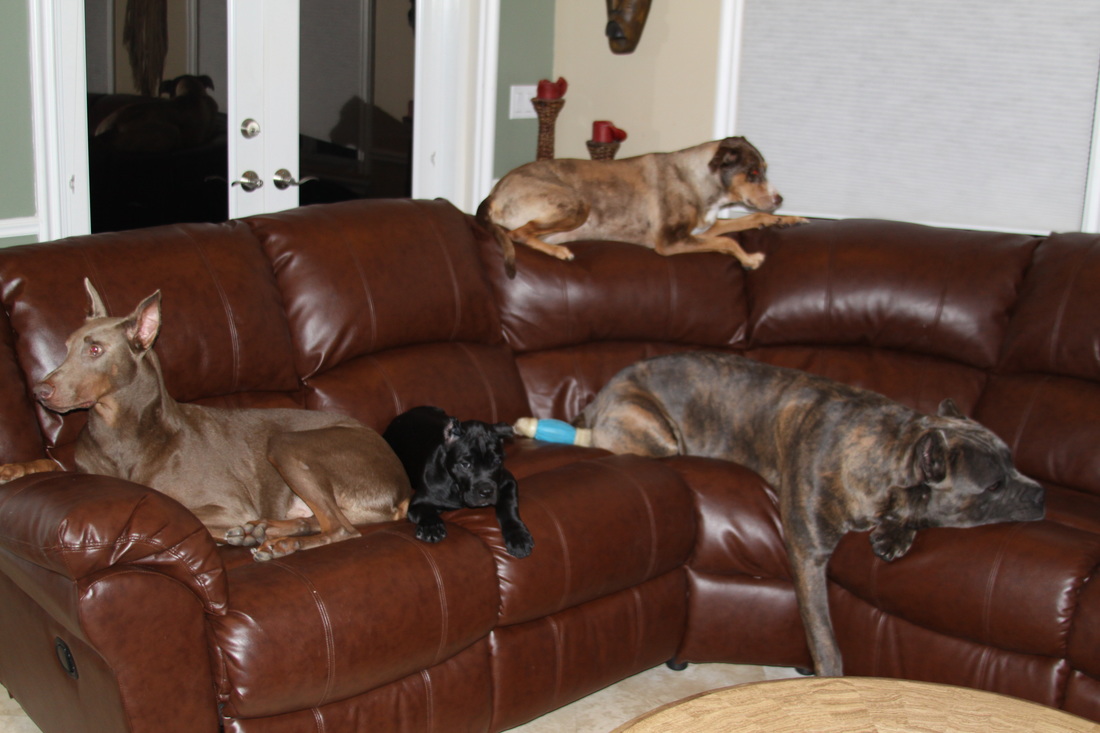
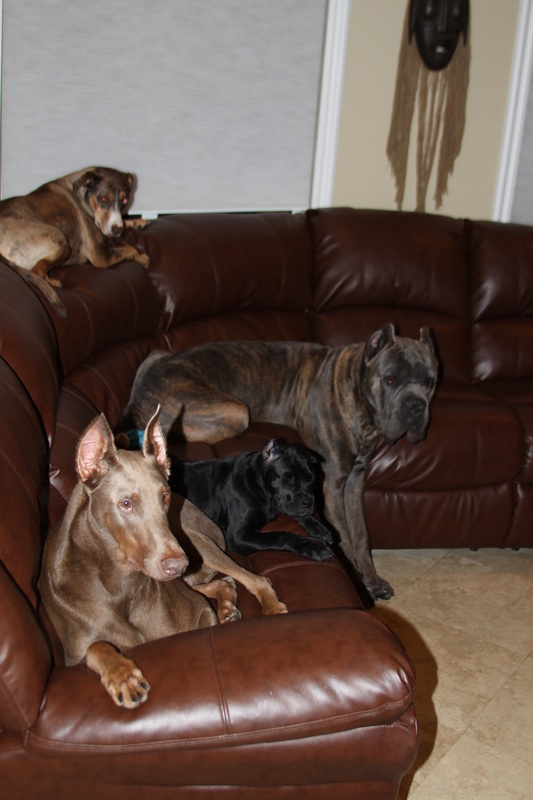
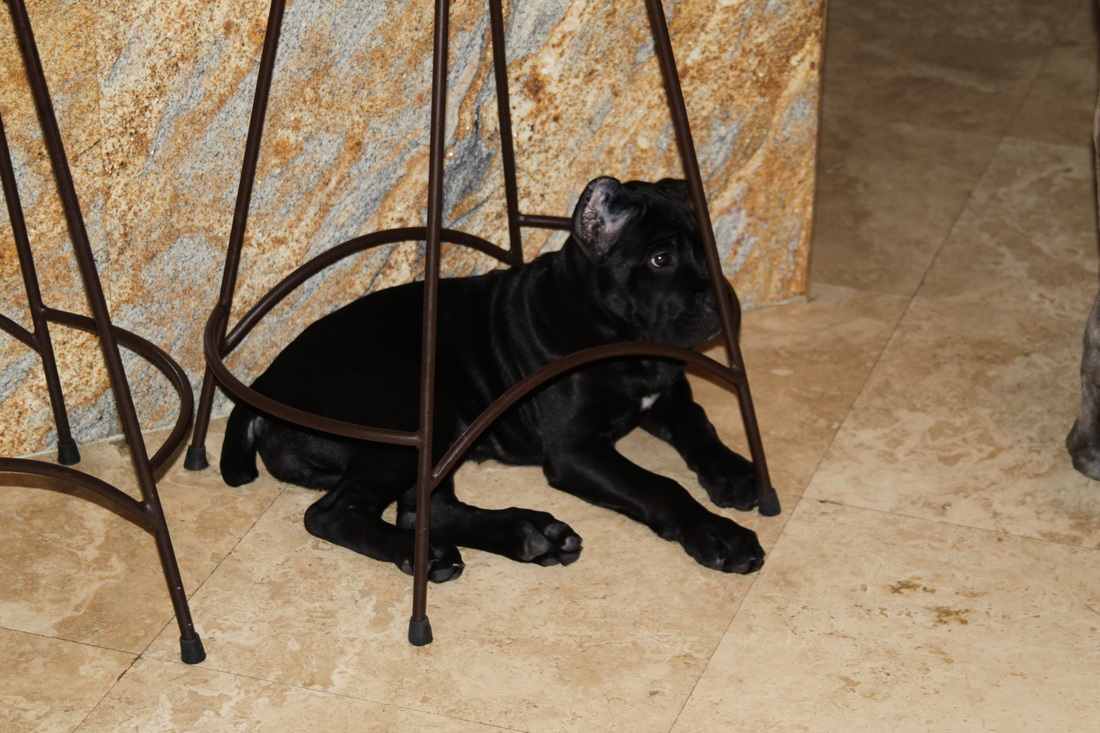
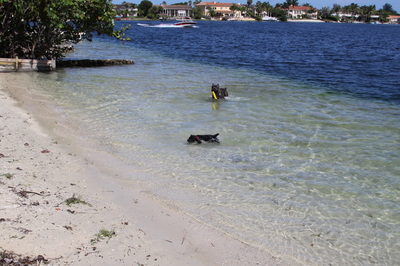
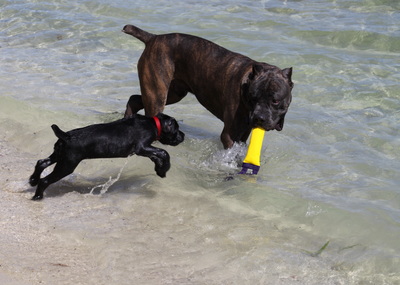
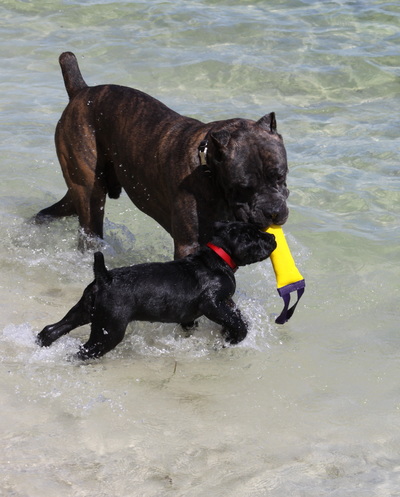
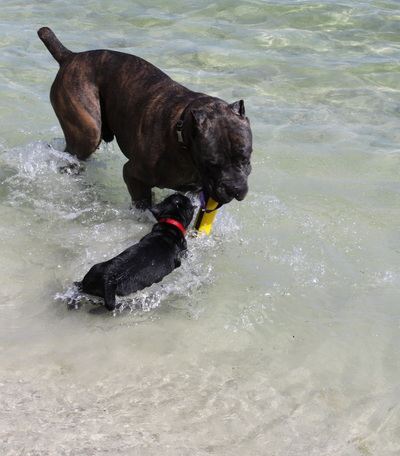
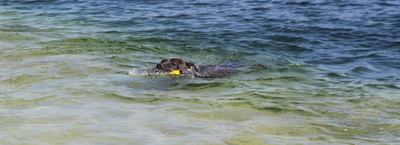
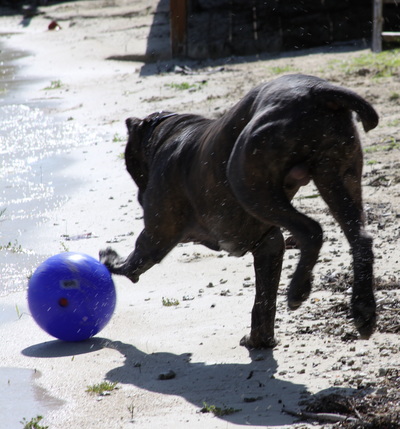
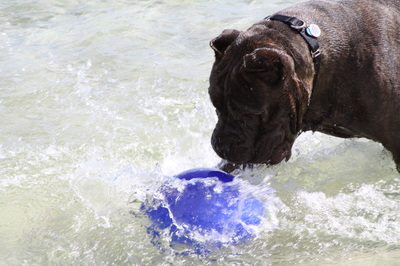
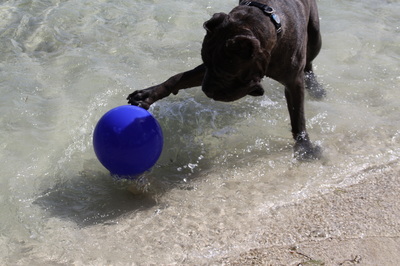
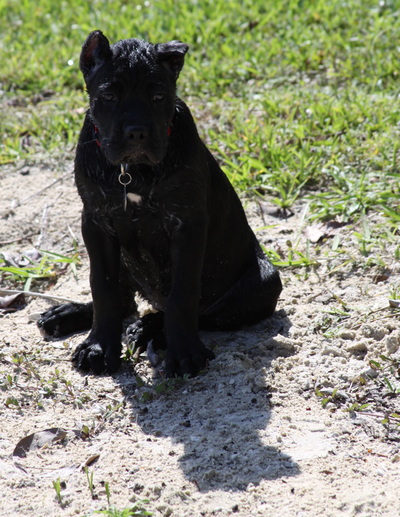
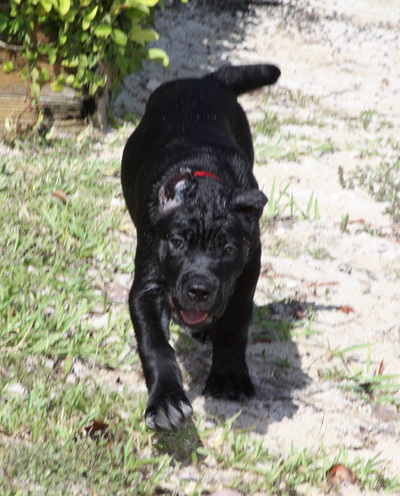
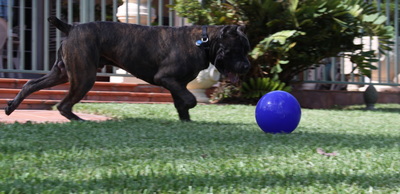
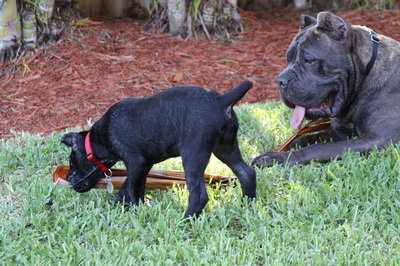
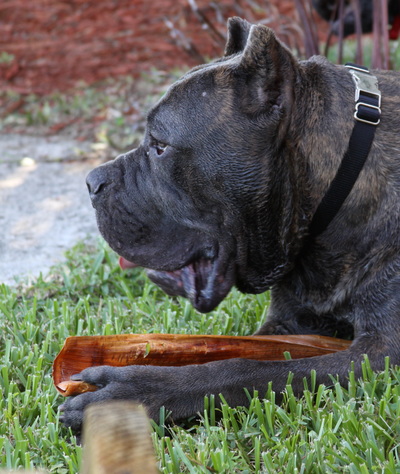
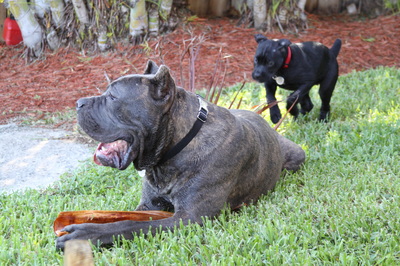
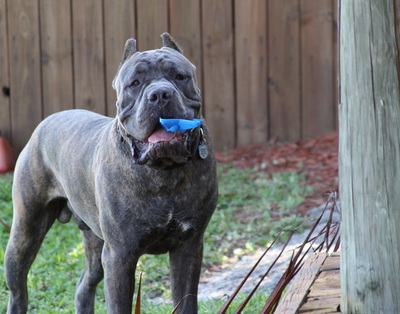
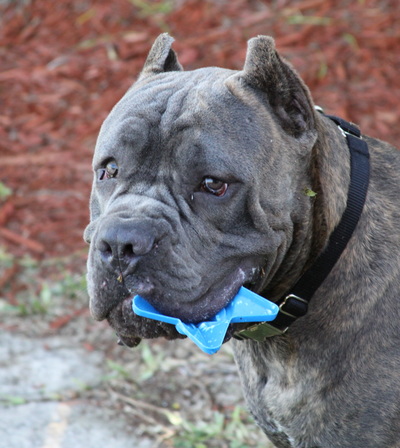
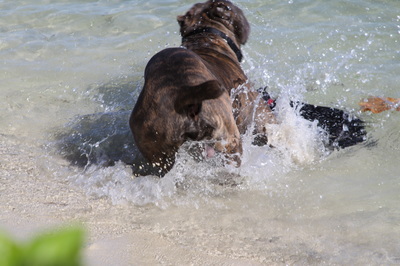
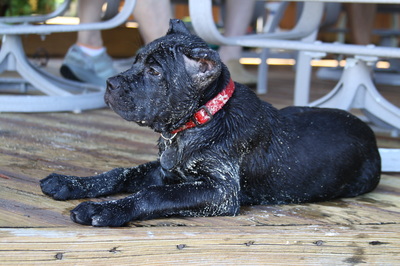
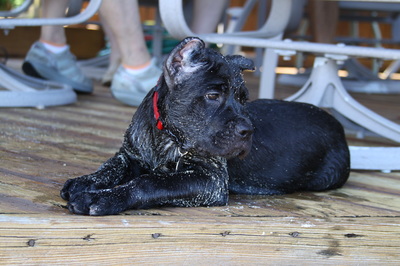
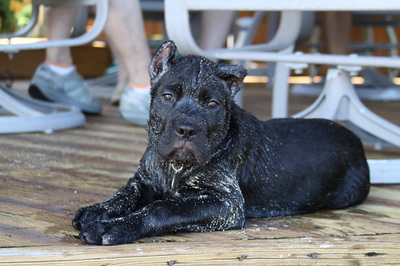
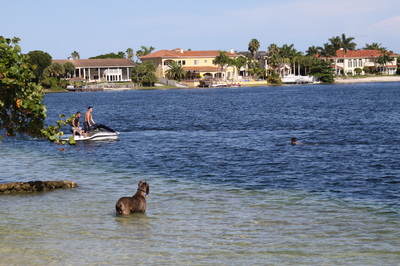
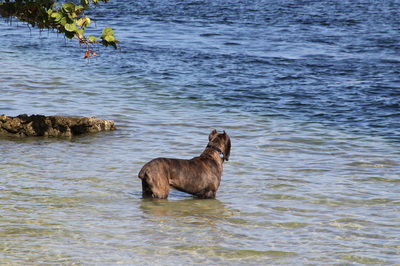
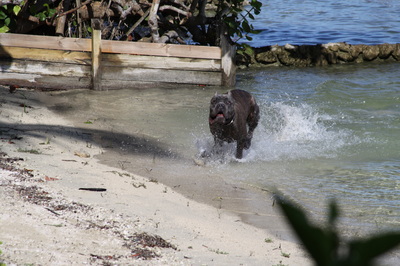
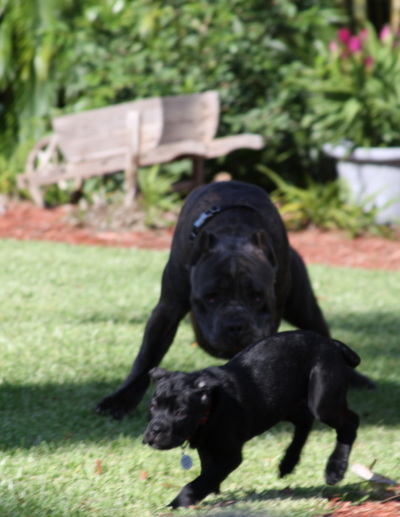
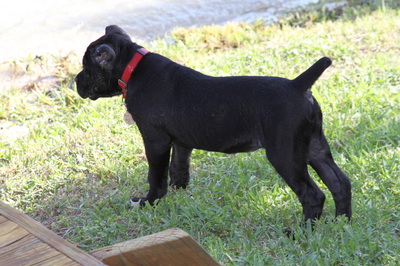
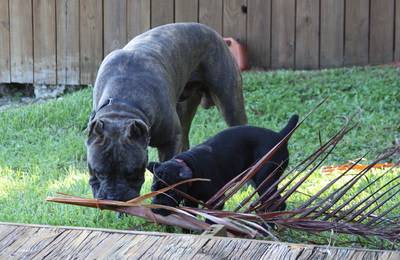
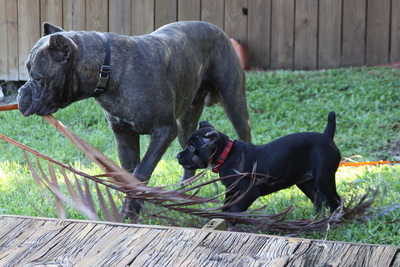
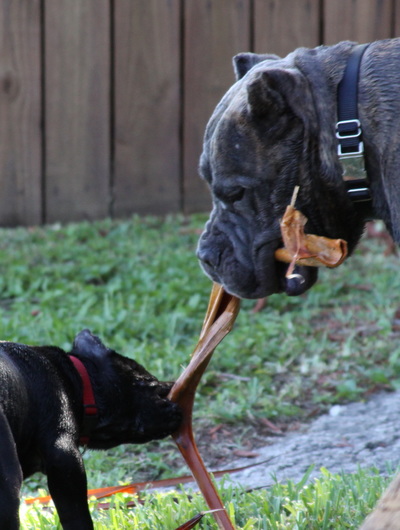
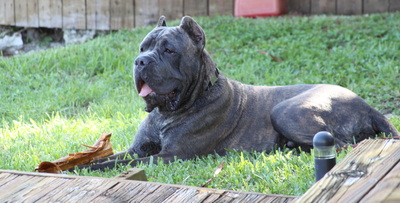
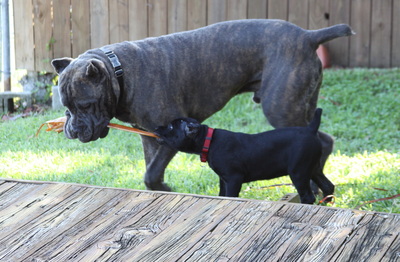
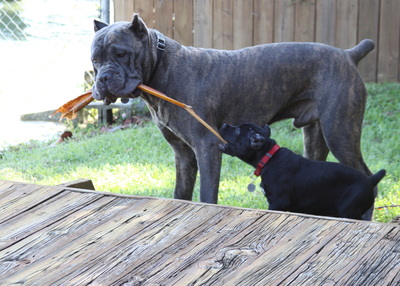
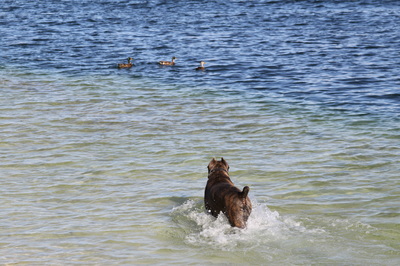
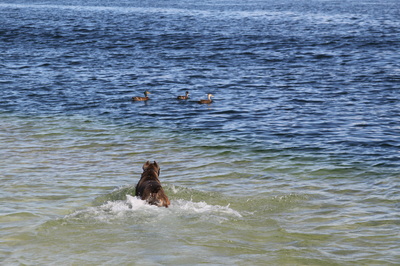
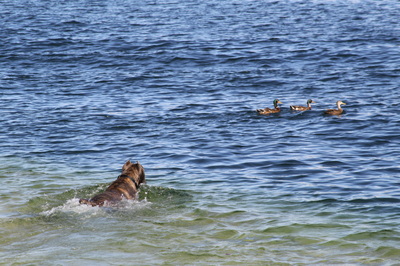
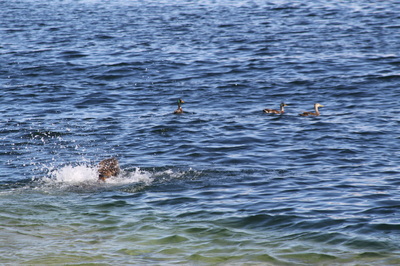
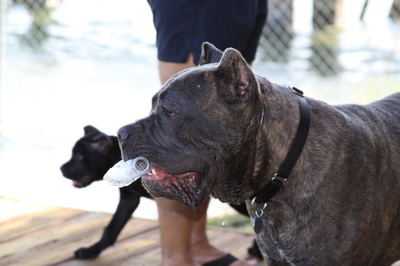
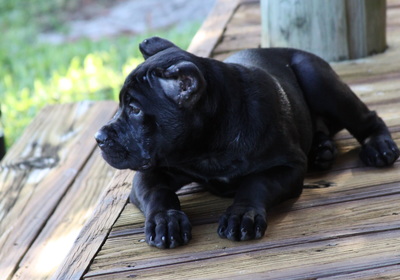
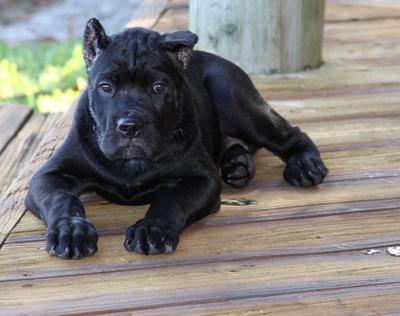
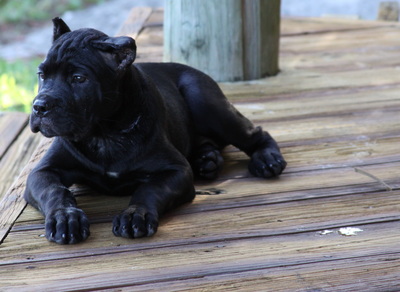
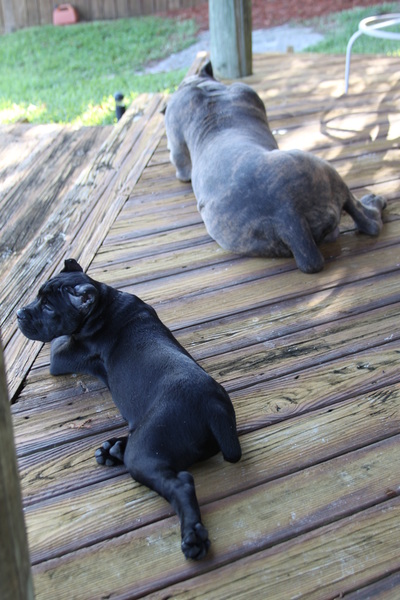
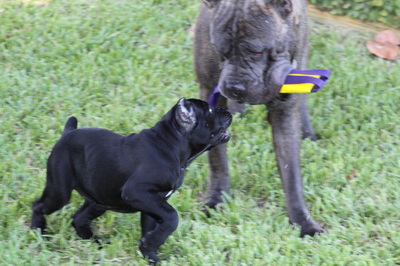
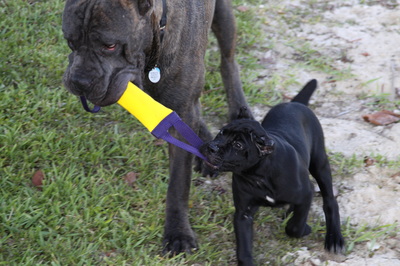
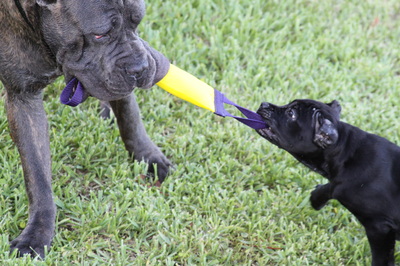
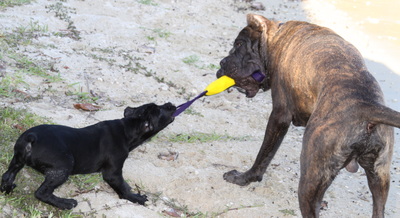
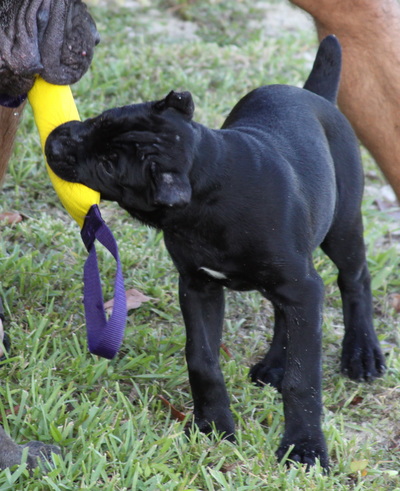
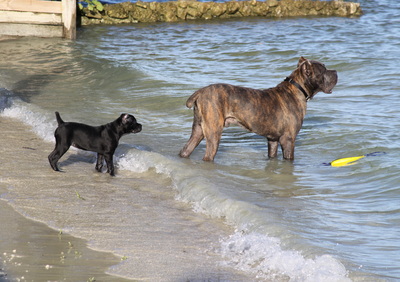
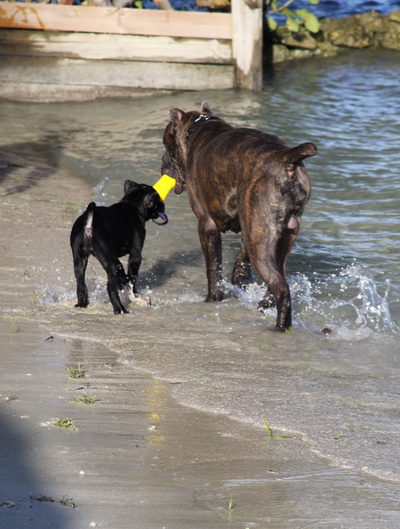
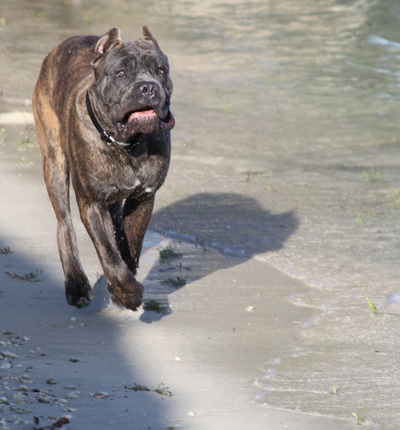
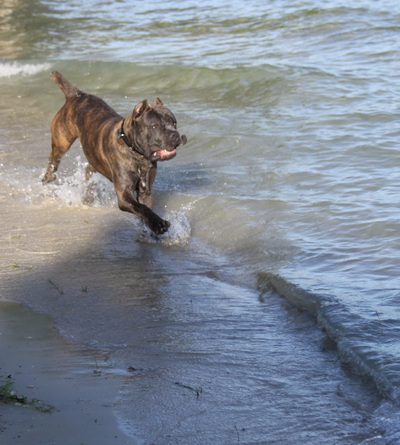
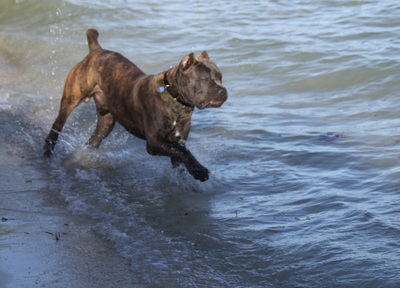
 RSS Feed
RSS Feed